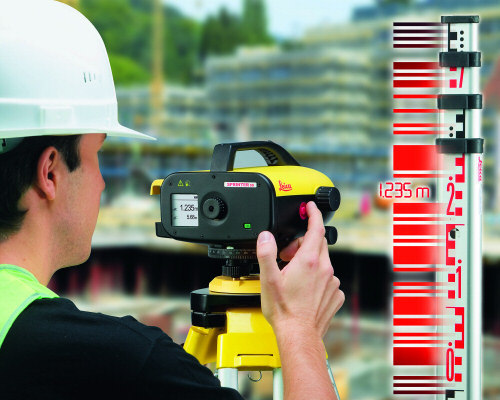Factors affecting the measuring procedure
Every operation in a measurement procedure is a possible error source and as such requires careful
consideration in order to assess the effect on the final result.
(1) Pointing and focusing
Obviously the instrument will not work if it is not pointed at the staff. The amount of staff that needs to be read depends on the range of the instrument to the staff. However, there will be a minimum amount necessary at short ranges. It may not be critical to have the staff pointing directly at the instrument.
The precision of the height measurement may be independent of sharpness of image; however, a clear, sharply focused image reduces the time required for the measurement. If the image is too far out of focus then the instrument may not read at all. Some instruments have an auto-focus function to avoid potential focusing problems.
(2) Vibrations and heat shimmer
Vibration of the compensator caused by wind, traffic, etc., has a similar effect on the bar code image as that of heat shimmer. However, as digital levelling does not require a single reading, but instead is dependent on a section of the code, the effects of shimmer and vibration may not be critical.
Similarly, scale errors on the staff are averaged.
(3) Illumination
As the method relies on reflected light from the white intervals of the bar code, illumination of the staff is important. During the day, this illumination will be affected by cloud, sun, twilight and the effects of shadows. Up to a point these variations are catered for by the instrument but under adverse conditions there may be an increase in the measuring time.
(4) Staff coverage
In some conditions part of the bar code section being interrogated by the instrument may be obscured.
Consult the manufacturer’s handbook to ensure that sufficient of the staff is showing to the instrument.
(5) Collimation
The collimation value is set in the instrument but can be checked and changed as required. The method of determining the collimation is based upon one of the two peg methods described earlier. Once the collimation value has been determined it is applied to subsequent readings thereby minimizing its effect.
Note, however, that it can never be completely removed and appropriate procedures according to the
precision required must still be applied.
(6) Physical damage
It is likely that the instrument will be seriously damaged if it is pointed directly at the sun.
